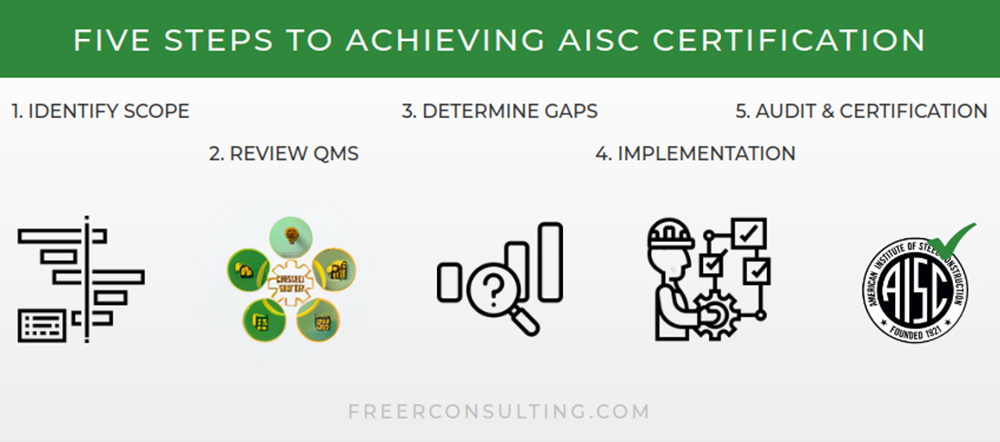Achieving AISC certification is a critical milestone for steel fabricators, component manufacturers, and erectors seeking to demonstrate their commitment to quality, safety, and industry best practices. The American Institute of Steel Construction (AISC) sets rigorous standards, and the certification process can seem complex. However, breaking it down into five key steps can make the process more manageable and efficient.
Our infographic below outlines the five essential steps to achieving AISC certification:
1. Identify Your Scope
Before starting the certification process, determine which AISC certification categories apply to your business. Are you a building fabricator, bridge fabricator, erector, or component manufacturer? Identifying your scope ensures you are applying the correct standards and preparing for the right audit.
2. Review Your Quality Management System (QMS)
Your QMS is the foundation of AISC certification. Review existing policies, procedures, and documentation to ensure they align with AISC requirements. Pay close attention to welding procedures, material traceability, and quality control measures.
3. Determine the Gaps
Conduct an internal gap analysis to identify missing documentation, nonconforming processes, or training needs. This step is crucial to proactively address any weaknesses before the AISC audit.
4. Implement the Updated QMS
Update your processes, documentation, and training to comply with AISC standards. Ensure that staff are trained, quality control measures are in place, and records are properly maintained.
5. Conduct an Internal Audit & Schedule Certification
A final internal audit will confirm that your systems meet AISC 207-20 requirements. If everything is in order, schedule your official AISC certification audit to complete the process.
Get Expert Guidance for Your AISC Certification
Navigating AISC certification can be challenging, but you don’t have to do it alone. At Freer Consulting Co., we provide tailored AISC certification consulting to help your business streamline compliance, reduce risks, and achieve certification with confidence.


